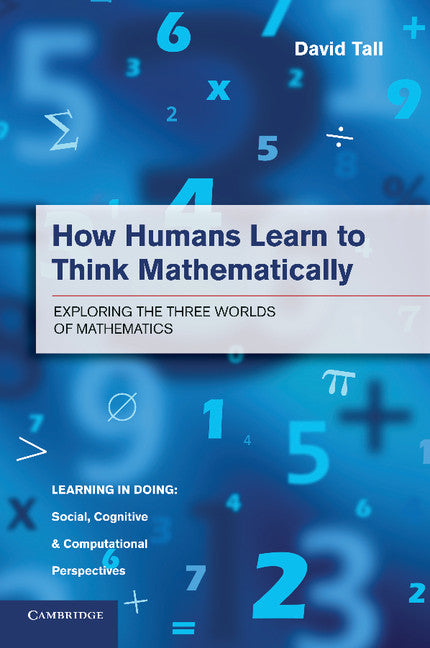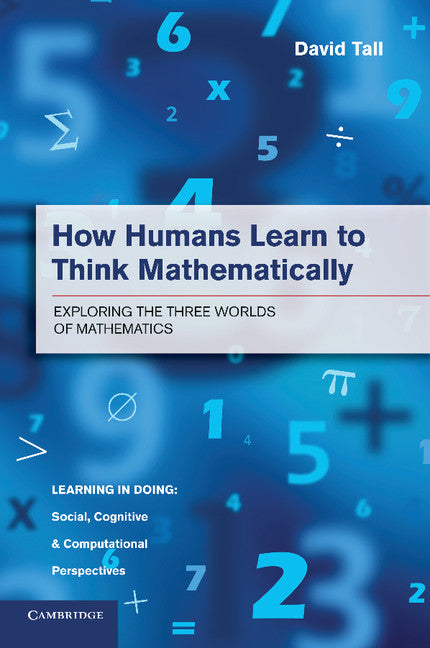Freshly Printed - allow 8 days lead
Couldn't load pickup availability
How Humans Learn to Think Mathematically
Exploring the Three Worlds of Mathematics
How Humans Learn to Think Mathematically describes the development of mathematical thinking from the young child to the sophisticated adult.
David Tall (Author)
9781107668546, Cambridge University Press
Paperback / softback, published 2 September 2013
484 pages, 175 b/w illus. 4 tables
22.9 x 15.2 x 2.8 cm, 0.64 kg
How Humans Learn to Think Mathematically describes the development of mathematical thinking from the young child to the sophisticated adult. Professor David Tall reveals the reasons why mathematical concepts that make sense in one context may become problematic in another. For example, a child's experience of whole number arithmetic successively affects subsequent understanding of fractions, negative numbers, algebra, and the introduction of definitions and proof. Tall's explanations for these developments are accessible to a general audience while encouraging specialists to relate their areas of expertise to the full range of mathematical thinking. The book offers a comprehensive framework for understanding mathematical growth, from practical beginnings through theoretical developments, to the continuing evolution of mathematical thinking at the highest level.
Part I. Prelude: 1. About this book
Part II. School Mathematics and its Consequences: 2. The foundations of mathematical thinking
3. Compression, connection and blending of mathematical ideas
4. Set-befores, met-befores and long-term learning
5. Mathematics and the emotions
6. The three worlds of mathematics
7. Journeys through embodiment and symbolism
8. Problem-solving and proof
Part III. Interlude: 9. The historical evolution of mathematics
Part IV. University Mathematics and Beyond: 10. The transition to formal knowledge
11. Blending knowledge structures in calculus
12. Expert thinking and structure theorems
13. Contemplating the infinitely large and the infinitely small
14. Expanding frontiers through mathematical research
15. Reflections
Appendix: where the ideas came from.
Subject Areas: Mathematics [PB], Educational psychology [JNC], Psychology [JM]


